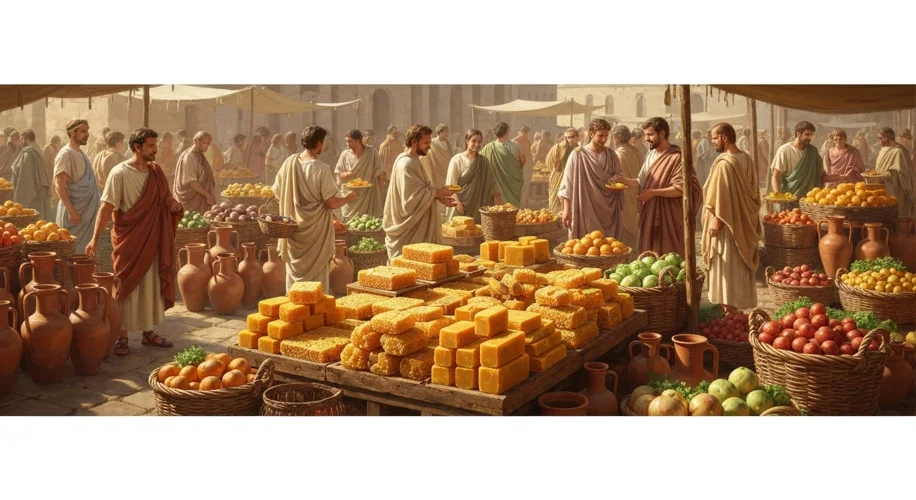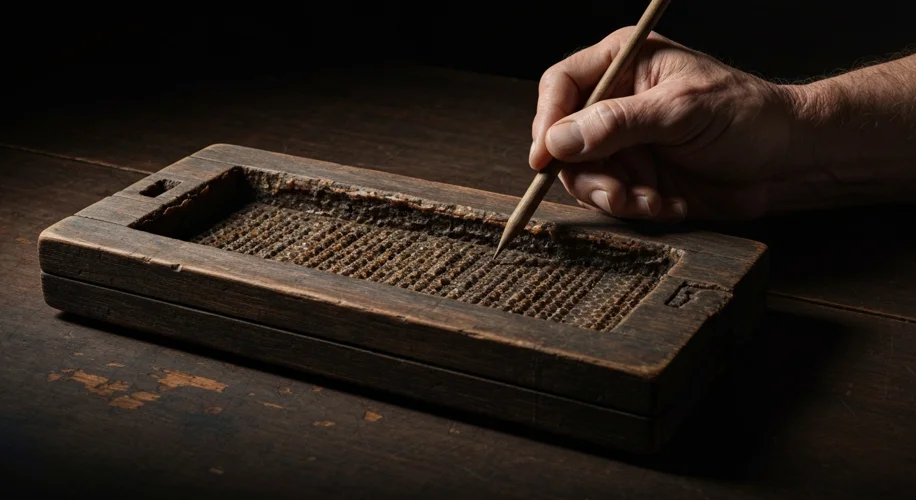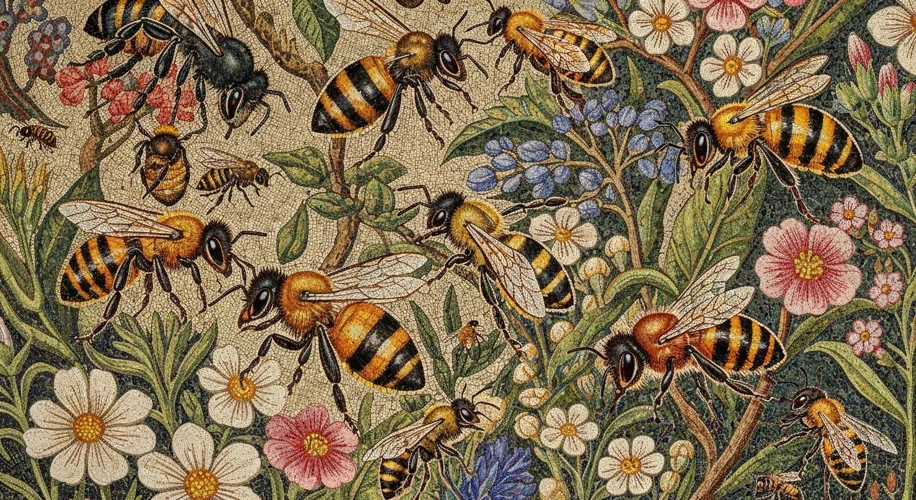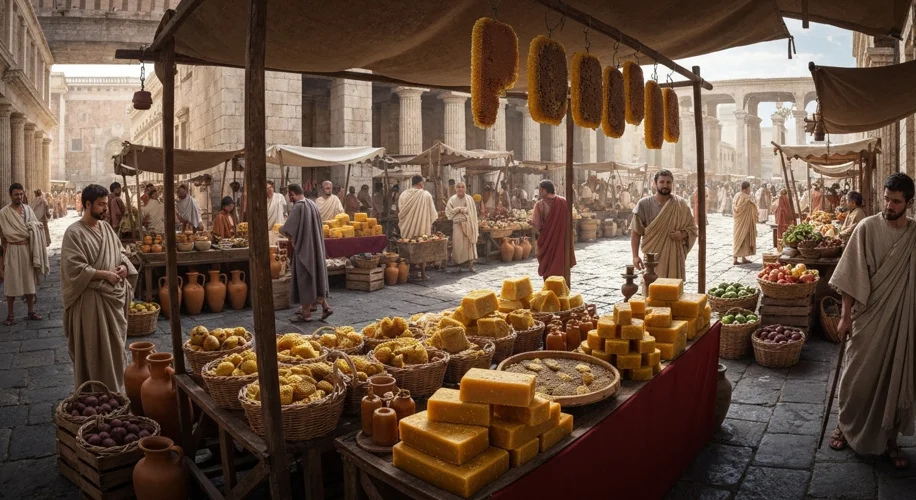Before the clatter of coins and the rumble of legions, the Roman Empire buzzed with a quieter, yet equally vital, economic engine: the humble honeybee.
Imagine a Roman market day. The air is thick with the scent of roasting meats, pungent cheeses, and the sweet perfume of exotic spices. Amidst the clamor, a vendor proudly displays glistening combs of amber honey, its sweetness a rare luxury in a world devoid of refined sugar. Beside them, a craftsman meticulously shapes blocks of beeswax, destined for purposes as varied as illuminating manuscripts and sealing official decrees.

From the sprawling vineyards of Italy to the sun-drenched olive groves of North Africa, bees and their precious products – honey and wax – were far more than mere curiosities. They were foundational elements of Roman commerce, diet, medicine, and daily life.
A Taste of Empire: Honey in Roman Cuisine
For the Romans, honey was the primary sweetener. It graced the tables of the elite and found its way into the simpler fare of the common folk. Honey was used to sweeten wine, a practice known as mulsum, which was particularly popular. It was also a key ingredient in many dishes, from savory sauces to decadent desserts. Think of libum, a simple cheesecake made with ricotta, honey, and flour, or moretum, a herb and cheese spread. Even basic bread benefited from a drizzle of honey, adding a touch of sweetness and aiding in preservation.
Apicius, the famed Roman gourmand, dedicates numerous recipes in his De Re Coquinaria to the use of honey. It was not just a sweetener but a complex flavor enhancer, used in everything from spiced meats to fruit preserves. The value of honey was such that its production was often a significant agricultural undertaking, with beekeepers playing a crucial role in the rural economy.
More Than Sweetness: The Versatile Power of Beeswax
Beeswax, the other invaluable gift from the hive, was perhaps even more versatile. Its pliable nature and slow, steady burn made it indispensable for Roman industry.
Perhaps its most significant use was in the creation of writing tablets. Sheets of wood were coated with a thin layer of beeswax, which could then be inscribed upon with a stylus. These tabulae ceratae were the Roman equivalent of notebooks, used for everything from school lessons and legal documents to personal correspondence. The wax could be smoothed over and reused, making them an economical and practical writing medium. The emperor’s decrees, legal contracts, and even private letters were often recorded on these waxy surfaces.

Beyond writing, beeswax was the premier source for illumination. Roman candles, made by dipping reeds or linen wicks into molten beeswax, provided a cleaner, less smoky light than tallow candles. This was especially important in homes, workshops, and for religious ceremonies, where a pure light was desired. The rich, pleasant scent of burning beeswax was also a welcome contrast to the acrid smell of animal fat.
Beeswax also found its way into cosmetics, used in salves and ointments. It was employed in metal casting, as a sealant for pottery and amphorae, and even in the creation of religious icons and sculptures. Its importance was such that a reliable supply of beeswax was essential for the functioning of Roman society.
A Measure of Wealth and Trade
Both honey and wax were not only commodities but also indicators of wealth and status. The ability to afford large quantities of honey for sweetening or to use beeswax for personal writing tablets spoke of affluence. Provinces that were rich in bee populations, such as parts of Greece and North Africa, became important suppliers to the Roman heartland.
Trade routes crisscrossed the empire, carrying these precious goods from distant lands to the bustling markets of Rome. Beekeepers were respected figures, their livelihood directly tied to the health of their buzzing charges. The Romans understood the delicate symbiosis between human society and these industrious insects.
The Emperor’s Apiary and Beyond
Indeed, the Roman elite recognized the value of apiculture. Wealthy landowners often maintained their own apiaries, not just for personal use but as a source of income and a symbol of their agricultural prowess. Some emperors even patronized beekeeping, understanding its contribution to the empire’s stability and prosperity.
While we often focus on the grand legions, aqueducts, and monumental architecture of Rome, the story of the Roman economy is incomplete without acknowledging the tireless work of its smallest, most industrious citizens: the bees. Their golden honey and versatile wax were woven into the very fabric of Roman life, from the grandest banquet to the simplest inscription, proving that even the smallest creatures could build an empire.


